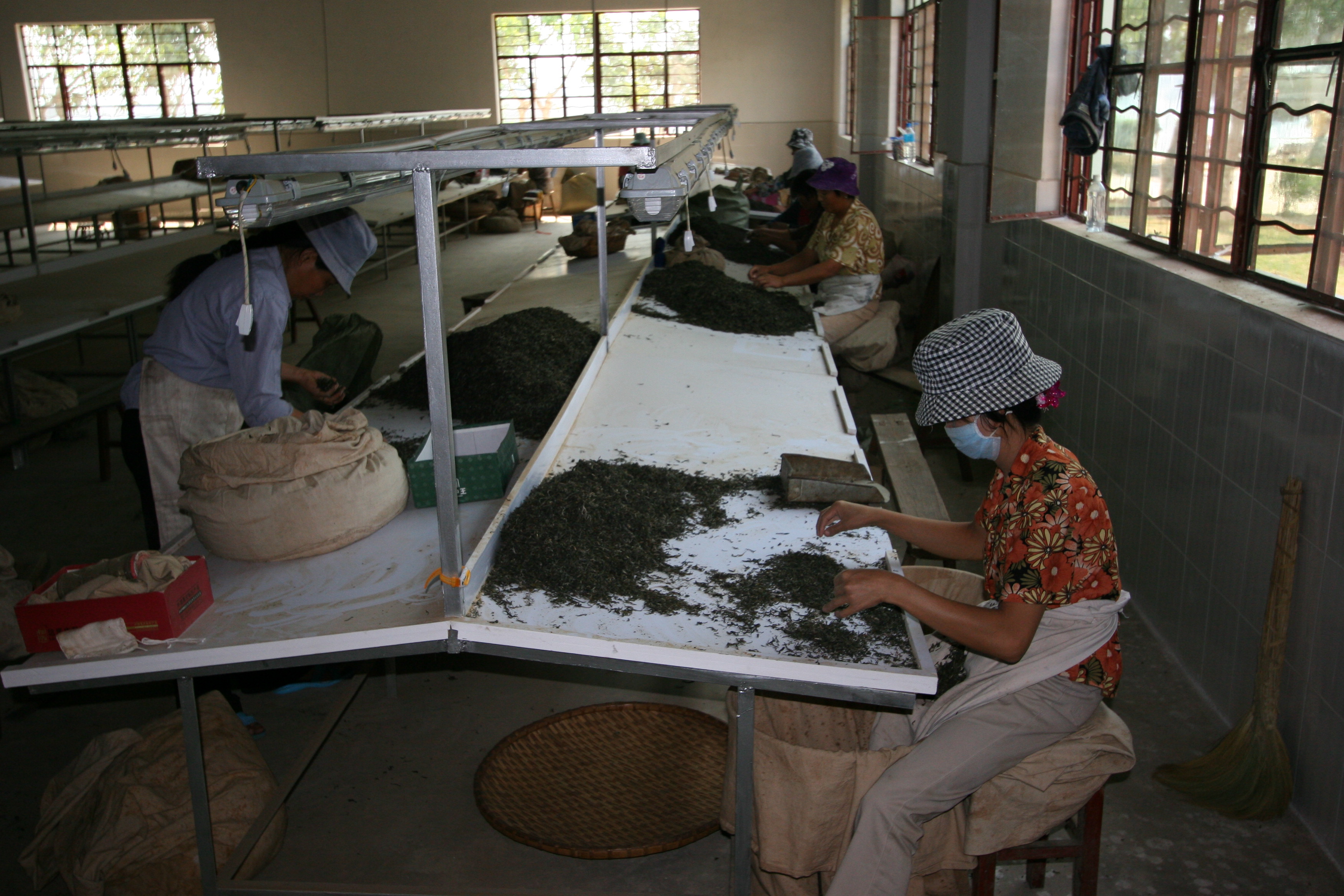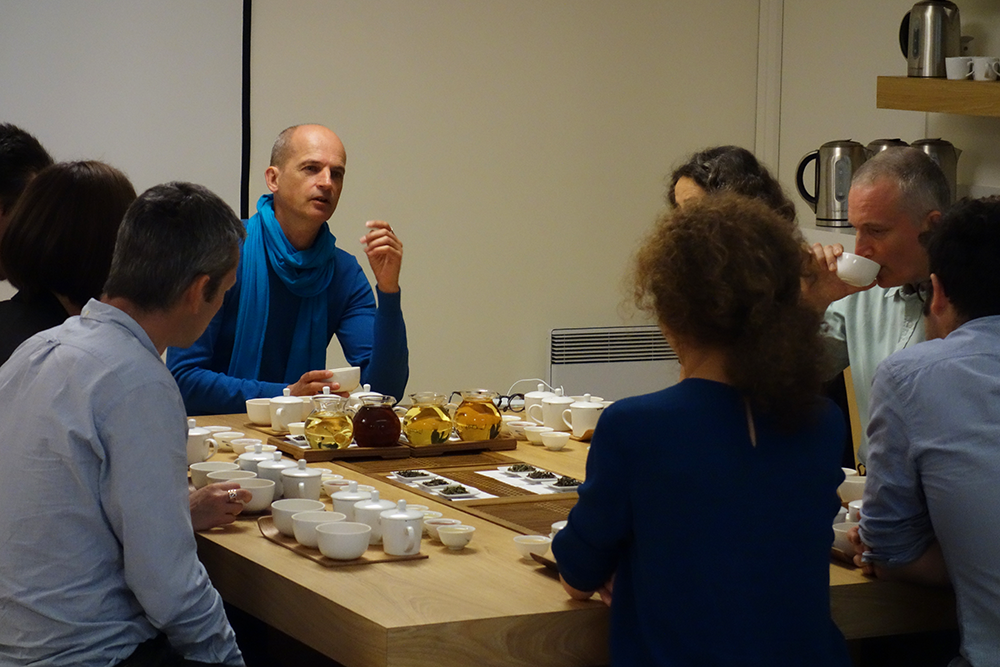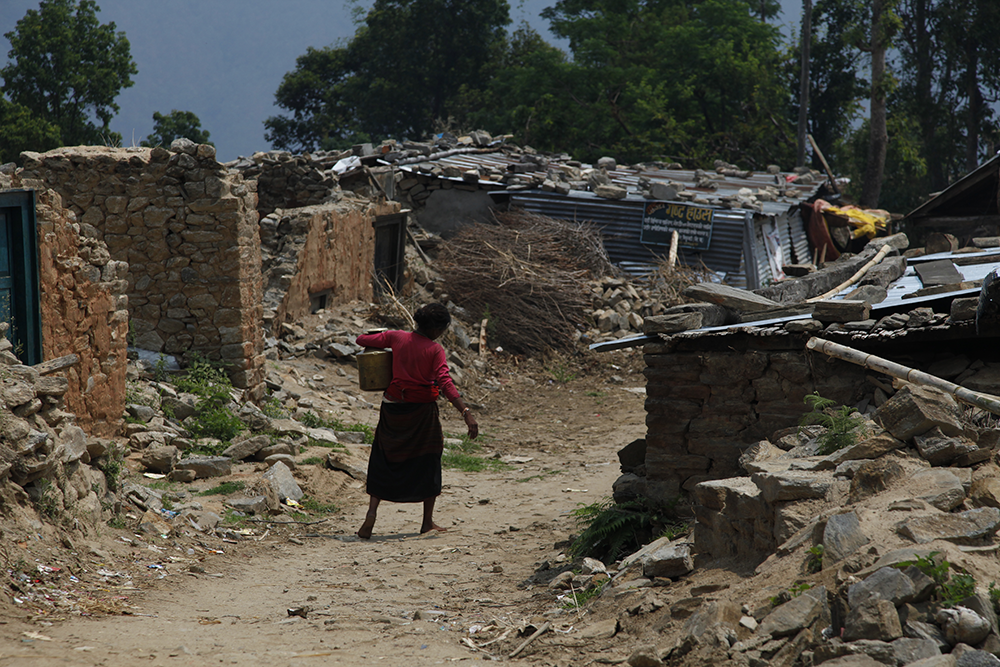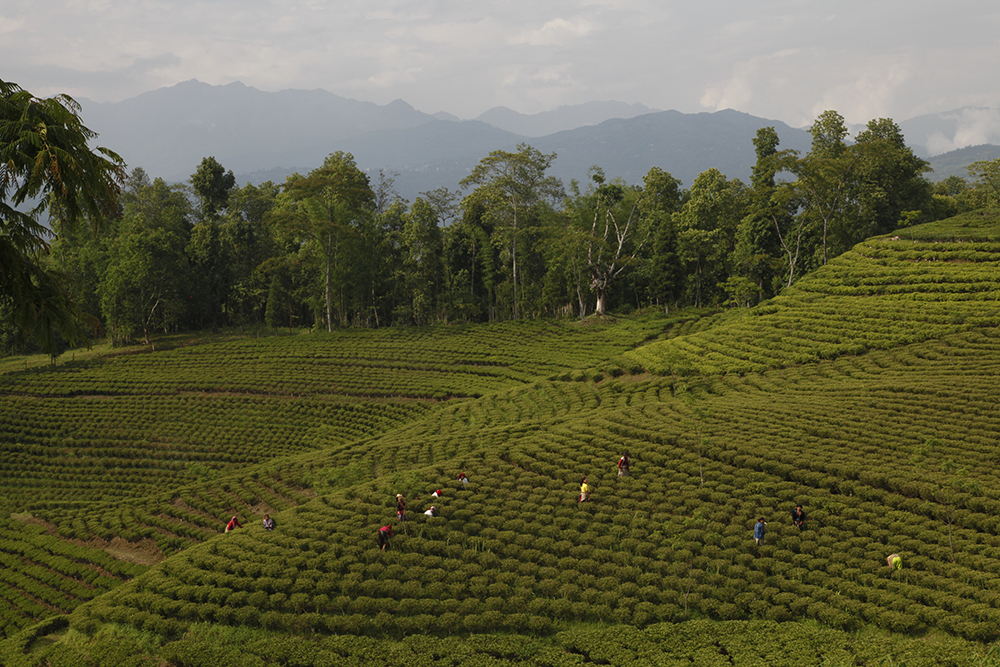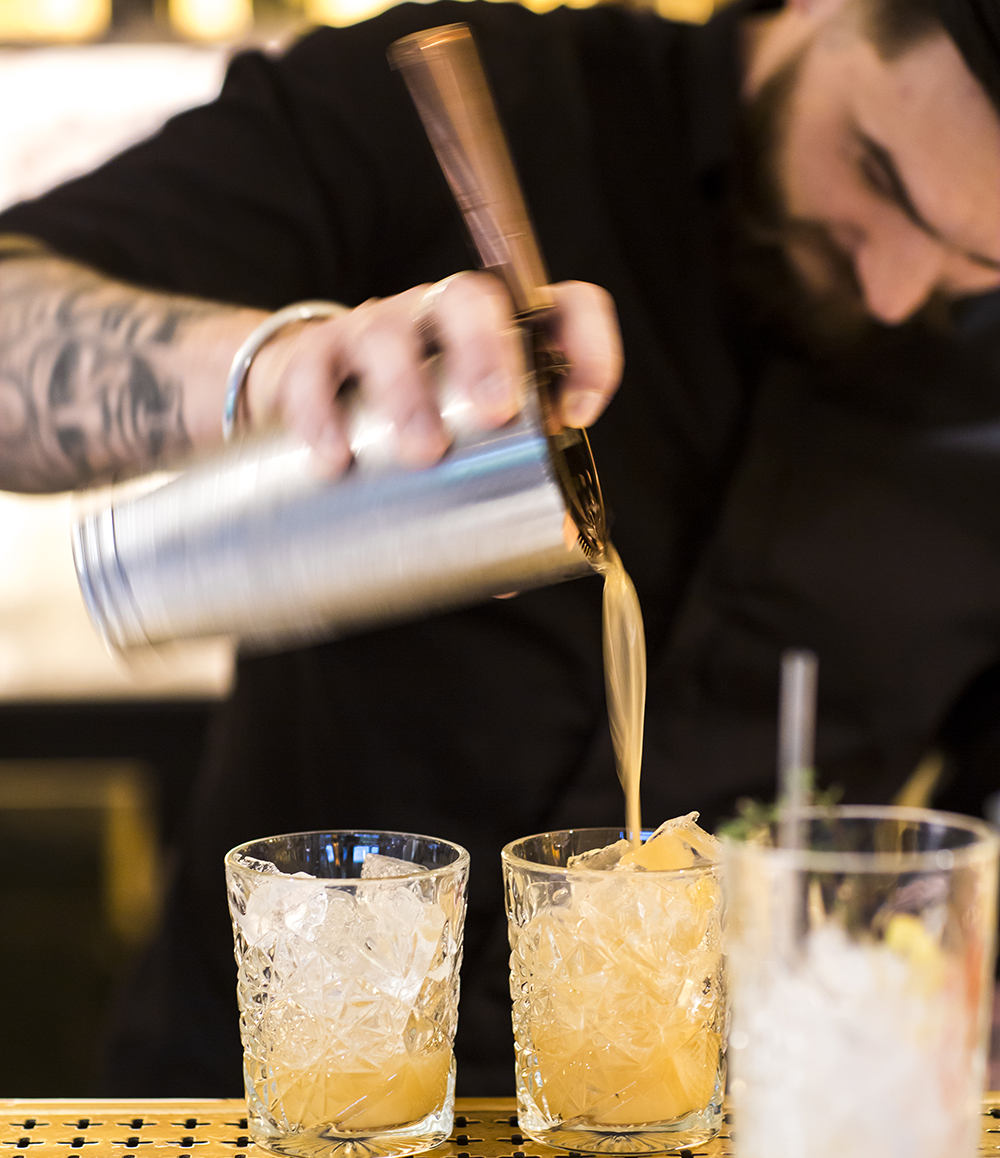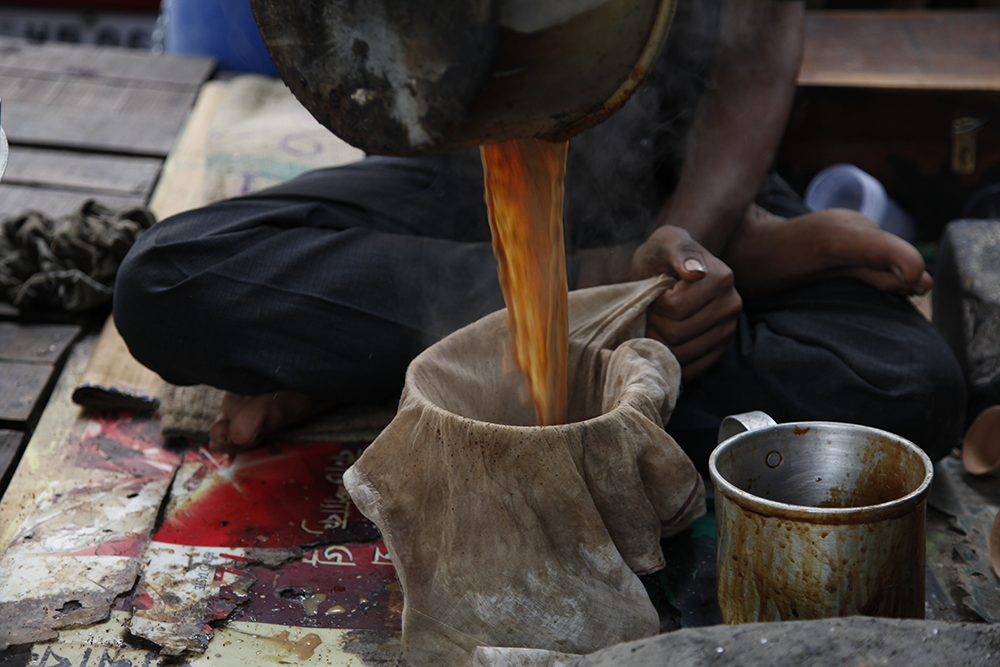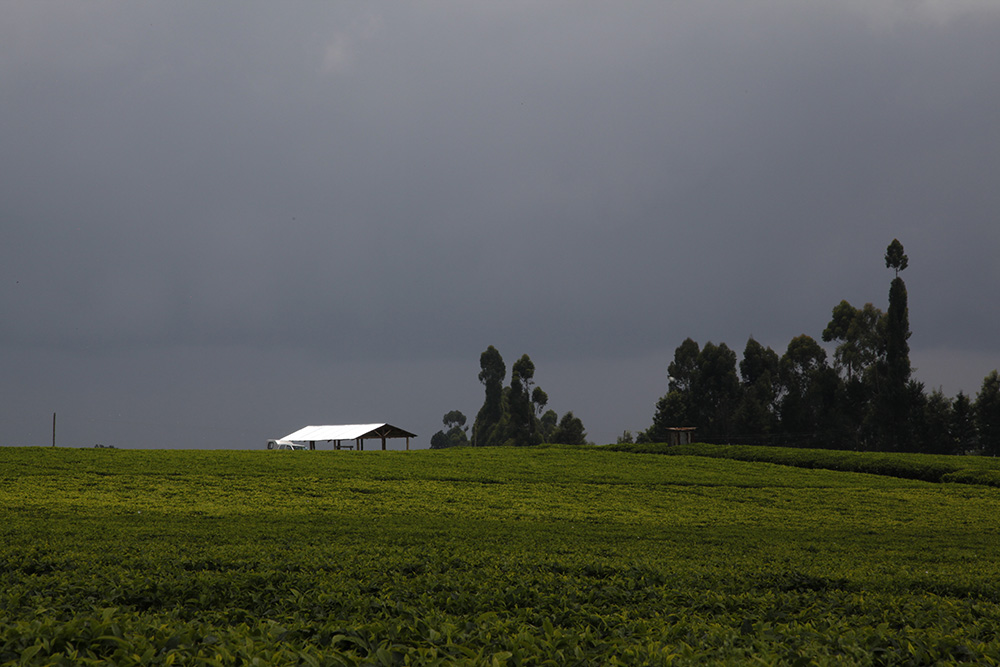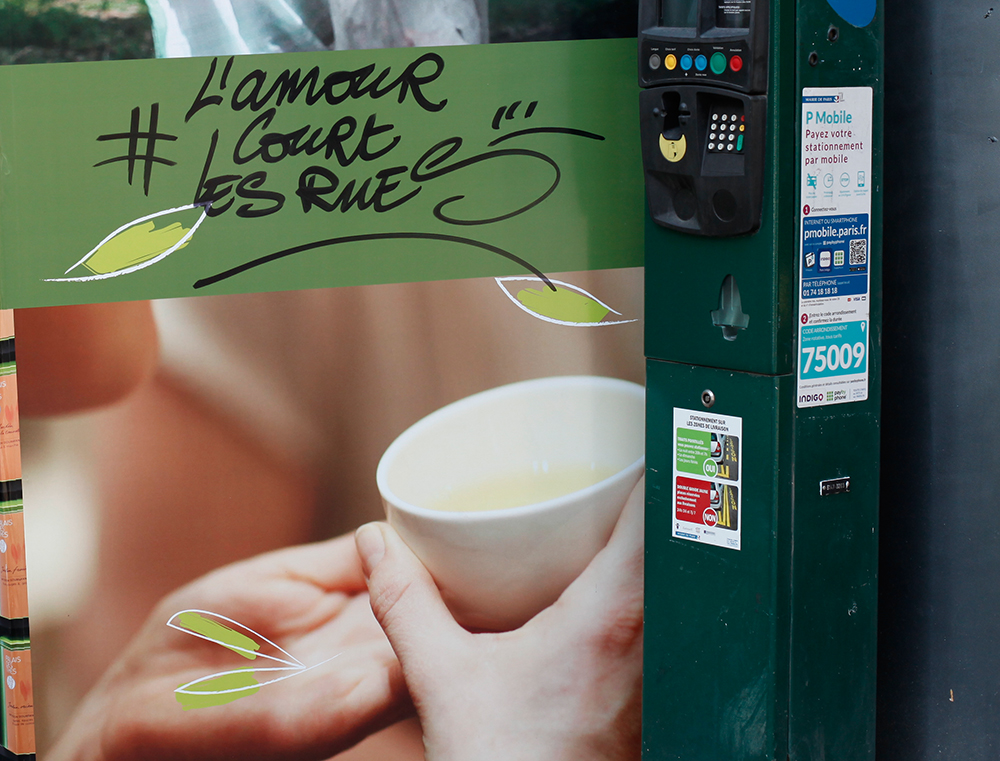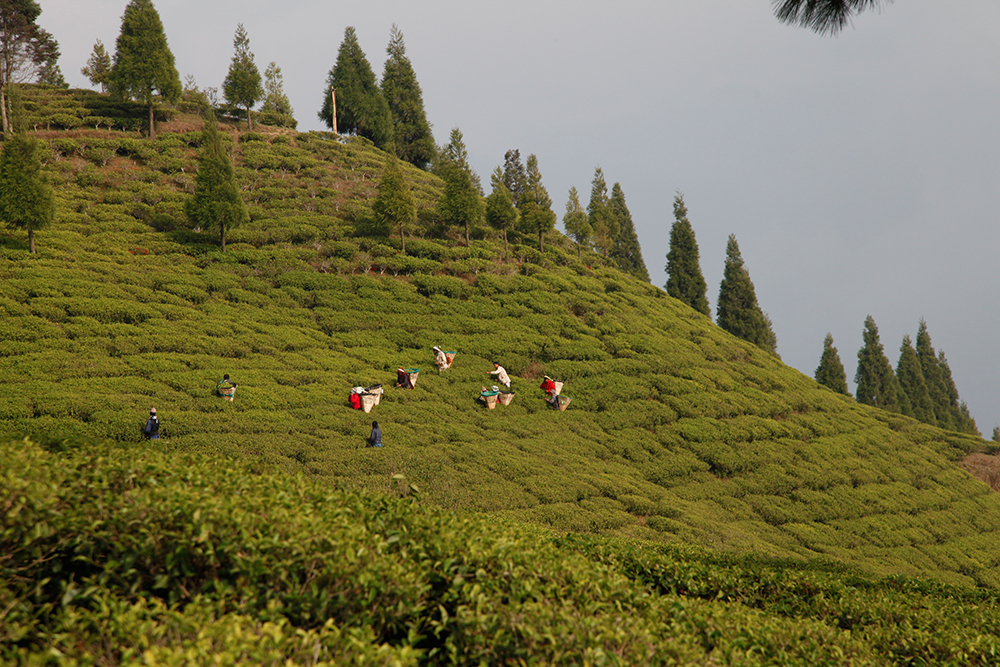On the hoarding surrounding one of our stores during renovation work, above an image of a cup of tea held carefully in two hands (we don’t know if it’s being handed to someone or being admired, but we can tell it’s the focus of attention), there’s some graffiti that makes me happy. A friend pointed it out to me. It’s a statement, a piece of important news. It’s worth stopping to look at.
Usually, I tell you about my travels far away on the other side of the planet, often in the mountains covered in mist, but it’s also good to pay attention to one’s immediate surroundings, and not always tell oneself that the grass is greener, that life is undoubtedly better, elsewhere. L’amour court les rues. Love is in the streets. This is good news. Because we demand it, the media constantly bombards us with bad news and forgets to give us this essential information: love is in the streets.
From Paris to Bamako, from Brussels to Istanbul, we sometimes have reason to doubt it, but love is in the streets because it’s written here, and it’s much more newsworthy than some other events. The graffiti in question is actually located in a street that Saint Denis passed through, just after his head had been cut off, and he was holding it in his hands, on his way to the place where the basilica bears his name. So not only is love in the streets, but it came after the martyrs, reminding us that love is more powerful that all hatred put together.
What if this graffiti artist was right? What if love was in the streets and we didn’t notice it, because we didn’t have time, we weren’t present, weren’t paying attention, weren’t aware? Because we were lacking altruism, Matthieu Ricard would say? We must try to be happy, even if it’s just to set an example, wrote Prévert. We could try to make the streets a bit more human, smile at ourselves, be kind to ourselves whenever we can, look after ourselves, say thank you when appropriate, help ourselves when necessary. Yes, love is in the streets, so let’s welcome it instead of not seeing it, let’s make room for it. It’s up to us. Let’s not let it go.

